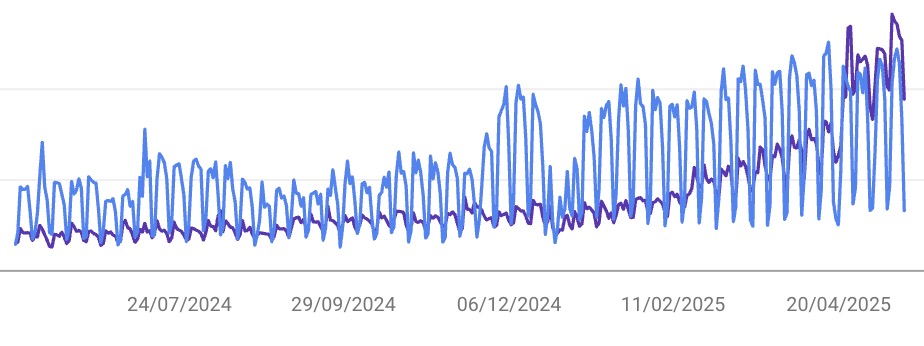The challenges with converting the traffic of a market leader
More than 8,000 businesses actively use the Exchanges these days. The brand is well-known in the courier & freight niches. People “in the know” make up the vast majority of the traffic to landing pages and money pages. To get more MQLs for the Exchanges, we had to solve two problems.
1. Optimising the user journey for qualified traffic
Multiple audiences are always a hot topic when it comes to website messaging and the user journey. In this instance, the issue was at a much higher level. The competing audiences weren’t split between different personas. Instead, the websites were aligned to be friendly for people who haven’t heard of the Exchanges before.
Using analytics, session recordings, and user tests, we observed that the majority of the audience is well aware of CX and HX. We suspected this was partially due to the strong, 25-year-old brand, but also because of the incredible work of the PPC and marketing teams. Their campaigns primed visitors for quick conversion, and that’s what we noticed in the data.
Especially on landing pages, people often convert without even scrolling the page one bit. We didn’t have to do much to increase conversions there – small usability tweaks to the top of PPC landing pages did the job.
On “money pages”, or for people visiting organically through branded search, there was a much bigger issue. They were faced with a long, multi-page user journey. The website was tailored to someone who’s exploring the Exchanges for the first time – but those people were a minority. We worked with the marketing team to drastically simplify the user journey. In the end, we were able to reach a 10%+ conversion rate with just 3-4 pages per session – that’s including the Sign Up and Thank You pages!
2. Assisting the content team with generating organic traffic
Even though we specialise in converting traffic brought to the site by marketing teams, we’re constantly helping the content and SEO team with technical improvements. Their efforts resulted in a 3.5x increase in impressions and 1.75x more clicks YoY.
Our contribution focused on optimising website performance, but also tackling one of the weak points of highly editable websites – managing debt. In this instance, the main problem was that the website had dozens of older landing pages. Some were saved for future use, but we needed to clean them up. This covered internal links and errors, deleting obsolete assets, and optimising images that slipped through the cracks unoptimised.

Our contribution focused on optimising website performance, but also tackling one of the weak points of highly editable websites – managing debt. In this instance, the main problem was that the website had dozens of older landing pages. Some were saved for future use, but we needed to clean them up. This covered internal links and errors, deleting obsolete assets, and optimising images that slipped through the cracks unoptimised.
 Luciana, Director of Marketing at Transport Exchange Group
Luciana, Director of Marketing at Transport Exchange Group



